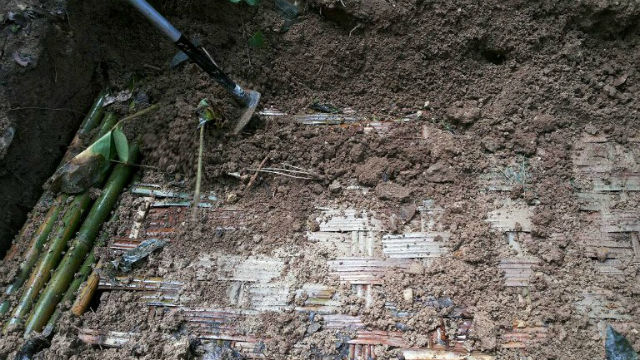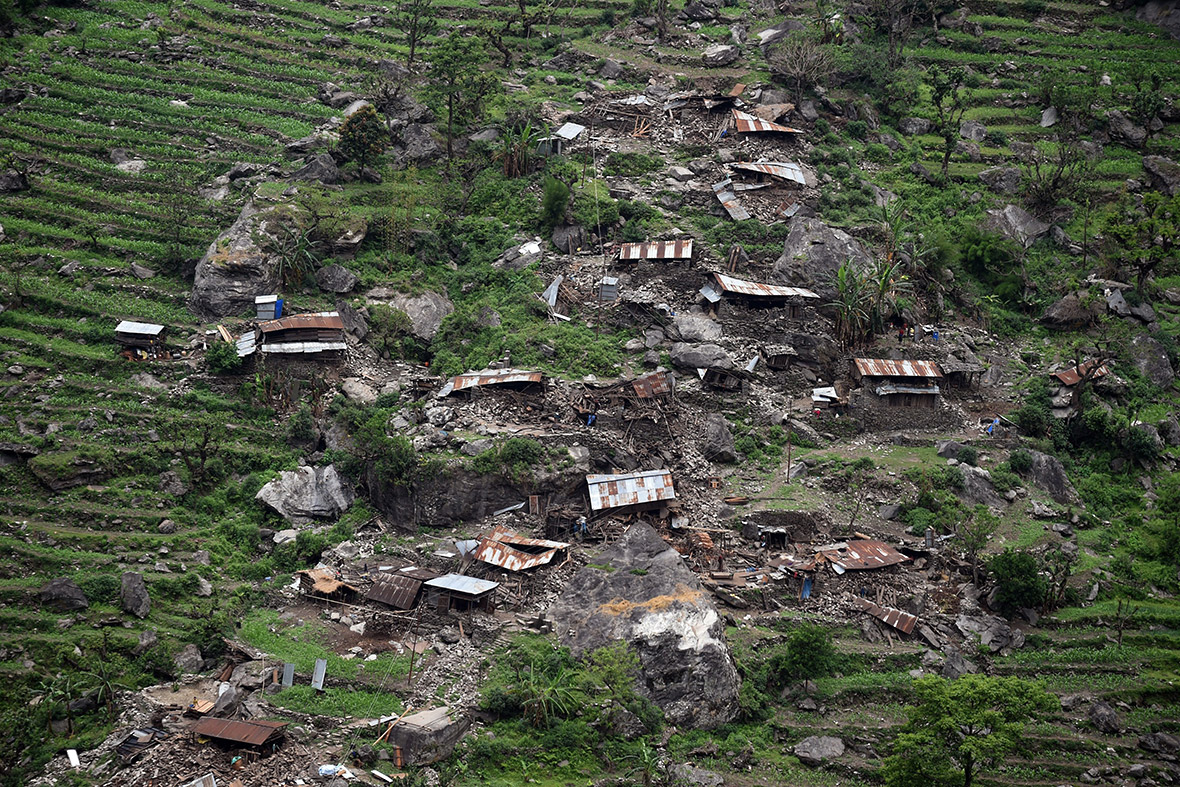
Two teenagers found in remote jungle near the site of a mass grave in Songkhla province yesterday revealed that at least 800 refugees were being held in the camp prior to its discovery by authorities.
The two youths, aged 14 and 17, said they had been held at the camp for eight months, and that the prisoners had been dispersed shortly before officers moved in on Friday.
It came as early reports began to emerge of the horrific conditions endured by prisoners being held at the remote border camp, where 26 bodies have now been recovered mostly from shallow graves.
“We were the people who could not pay the ransom so they kept us and did not really care whether we lived or died,” 28-year-old survivor Anuzar, who was found at the grave site on Friday, told news website Phuketwan.
“Most of us have been beaten or abused … In the camp, we were never able to get enough food or water. Showering seldom happened.”
Anuzar said he believed 10 Bangladeshis were among the dead scattered near the camp, along with at least 30 Rohingya.
“Eight brokers controlled the camp,” Anuzar said. “I knew three well — Ahmed Ali, Anwar and Sorim-Ida. Some are Rohingya, some are Malaysian.”
Sirichai Leewannapasai, chief of Songkhla’s Public Health Office, said yesterday that Anuzar’s condition is not serious. He suffered from fatigue and a lack of food, and also has a slight fever, but is making a steady recovery.
The camp itself is located in about two rai of thick jungle at the top of a mountain close to the Malaysian border, and commands sweeping views of all possible approaches. Of the 39 structures built at the site, 26 are sleeping quarters, and the rest are kitchens, bathrooms and an observation tower, police said.
The mass grave site was found in a clearing about 50 metres from the main camp, which police believe had been in operation for a “long time”.
“From the evidence given by witnesses who were in the camp, we believe there was violence here and people died from the violence,” Pol Gen Jarumporn Suramanee told Reuters.
It took a team of 100 forensic experts and rescue workers more than four hours yesterday to exhume another 21 bodies from shallow graves in the remote jungle camp.
The rugged terrain meant rescue workers are being forced to carry the bodies down the hill in teams of eight — a steep hike of about an hour — to Songklanagarind Hospital to be identified.
Of the 26 bodies that have now been recovered, 25 have been identified as male and one female, said Pol Gen Jaramporn Suramanee, a forensic science adviser to the Royal Thai Police.
Several of the bodies showed signs of decay indicating they had been dead for at least one month, Pol Gen Jaramporn said.
But one victim, whose body had not been buried, had died as recently as a few days ago.
Pol Gen Jaramporn said forensic experts have collected DNA samples from the bodies, but at this stage they are still unable to confirm their identities or ethnicity.
After autopsies and DNA tests are conducted, the bodies will be buried at Ban Phru in Songkhla’s Hat Yai district, he said.
Police are now expanding their probe to cover a human trafficking network in Nakhon Si Thammarat suspected of being linked to the camp.
Deputy national police chief Ake Angsananont said yesterday police are piecing together information from all concerned agencies.
Search and rescue missions are also being conducted in areas surrounding the camp looking for other potential survivors, Pol Gen Ake said.
Any human traffickers found to have been involved will be “severely punished”, he said, adding that proper funeral rites and burials will be arranged for the bodies.
Government spokesman Maj Gen Sansern Kaewkamnerd said Thailand is determined “to eliminate every type of human trafficking and block Thailand from being a transit point”.
He said those behind the camp will be “severely punished”, regardless of whether they are common criminals or corrupt officials.
His comments came amid strong pressure from international activists. Chris Lewa, director of the Arakan Project, which has monitored the movements of Rohingya for more than a decade, said traffickers are beginning to shift their tactics for holding prisoners.
Instead of jungle camps, she said Rohingya and Bangladeshis have in recent months been taken to large ships while they wait for ransoms to be paid.
Ms Lewa estimates that 7,000-8,000 migrants are currently parked off the coast or in nearby international waters.
Human Rights Watch has called for an independent investigation with UN involvement to find out what took place at the site.
“The discovery of these mass graves should shock the Thai government into shutting down the trafficking networks that enrich officials but prey on extremely vulnerable people,” HRW’s Brad Adams said.
Sunday 3 May 2015
http://www.bangkokpost.com/news/general/549643/death-camp-held-800-refugees



